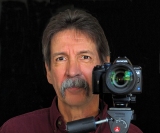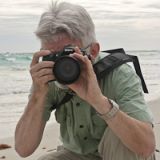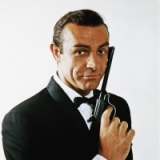- Forum
- Photography and Camera Forum
- Taking the Photo | Editing | The art of Photography!
- Beginner Photography Forum
- How to train your eye to see creatively?
How to train your eye to see creatively?
Post #177728
Anything would help.
Thanks everyone
Robert
-

- gjtoth
- Photography Hooked
-
- Olympus E-30, Olympus E-620, Fujifilm HS-20, Fujifilm F300EXR
- Followers: 26
- Posts: 642
-
Points:
0
Post #177734
~ Gary ~
The best camera is the one you have with you.
My gallery ===> toths.us/GJT
Feel free to comment & critique.
-

- Baydream
- Moderator
-
- Canoni/60D/70D/5DmkIII
- Followers: 388
- Posts: 11185
-
Points:
7280
Post #177736
www.google.com/products/catalog?q=bryan+...HOBw&ved=0CDsQ8wIwAw
or a number of items here
www.adorama.com/alc/expert/249
(I type slower
Shoot, learn and share. It will make you a better photographer.
fineartamerica.com/profiles/john-g-schickler.html?tab=artwork
-

- Henry Peach
- Apprentice
-
- I currently use a 5DII or Sony Nex-3 most of the time.
- Followers: 50
- Posts: 2925
-
Points:
16
Post #178618
You can probably find similar material online also. Try some negative space exercises.
A book I enjoyed was "Perception and Imaging: Photography-A Way of Seeing" by Richard Zakia
"I am always mentally photographing everything as practice." -Minor White
When I'm out and about without a camera I sometimes pretend I'm photographing with an imaginary camera. I think that has really helped me.
A good exercise I remember from my Photography 101 class was called "3 times of day" by my professor. Find a convenient location, such as in your yard. Shoot the scene. Return to the location at least 2 more times, and shoot the exact same composition in different kinds of light. Lighting can be changed by time of day, season, weather, etc... For instance shoot in the morning, early afternoon, and at sunset. Shoot on sunny days and overcast days. Compare all the photos, and see how different lighting changes the appearance of the same scene.
-

- cod
- Snapobsessed
- Nikon D300S
- Followers: 71
- Posts: 484
-
Points:
1165
Post #178634
"Designing a Photograph" by Bill Smith
"Creative Nature and Outdoor Photography" by Brenda Tharp
"Within the Frame" by David duChemin
-

- Trilby
- Has the Hang of it
-
- Nikon D300s
- Followers: 12
- Posts: 62
-
Points:
0
Post #178844
My photography teacher who I greatly respect drummed into us that looking at the work of others is one of the greatest tools in learning to see creatively.
Here's a link to the podcasts in question, I highly recommend them and the 'Photographic Meditations' is particularly relevant to this question.
itunes.apple.com/au/podcast/masterclass-...tography/id477845485
There is no black & white; it's all 18% grey.
-

- sleeper54
- Lone Wolf
-
- PowerShot SX50HS
- Followers: 68
- Posts: 199
-
Points:
2603
Post #178856
.Trilby wrote: --snip--
Here's a link to the podcasts in question, I highly recommend them and the 'Photographic Meditations' is particularly relevant to this question.
itunes.apple.com/au/podcast/masterclass-...tography/id477845485
this content/series and more is available at youtube ...for those who are not itunes-enabled.
Search for theartofphotography. . . .oh h3ll . . .here is a link...
The Art of Photography
...tom...
-

- Scotty
- Agent 007
- James Bond, PT mod.
- Followers: 1088
- Posts: 9884
-
Points:
15021
Post #178859
Use a prime, and get in close, don't shoot wide.
Use rules of 3rd's on simple objects and things will open up to you.
When the last candle has been blown out
and the last glass of champagne has been drunk
All that you are left with are the memories and the images-David Cooke.
-

- Todays Photos
- New Kid On The Block
-
- Canon Mark II
- Followers: 8
- Posts: 34
-
Points:
0
Post #178911
-

- Henry Peach
- Apprentice
-
- I currently use a 5DII or Sony Nex-3 most of the time.
- Followers: 50
- Posts: 2925
-
Points:
16
Post #178932
Trilby wrote: My photography teacher who I greatly respect drummed into us that looking at the work of others is one of the greatest tools in learning to see creatively.
-

- Henry Peach
- Apprentice
-
- I currently use a 5DII or Sony Nex-3 most of the time.
- Followers: 50
- Posts: 2925
-
Points:
16
Post #178934
Post #179479
I took art classes in high school/college and workshops since; I think that ended up being helpful with photography. I too would suggest studying 'the masters' - Ansel Adams was the first I remember reading up on years ago (I haven't done landscapes particularly but do quite a bit of B&W). Kertesz is my favorite, and I like Brassai, Strand; modern art and the Dutch masters and Vermeer's use of light. If you find a photographer or artist whose work you can relate to that could be a good starting point.
Going to museums is great, and many also have parts of their collections or exhibitions online for study. You might also see what you find at the library before you get into buying a lot of how-to books; I think some of those tend to give tips but don't necessarily help you understand what you're doing so you can apply it to a variety of situations.
Sharon
- Forum
- Photography and Camera Forum
- Taking the Photo | Editing | The art of Photography!
- Beginner Photography Forum
- How to train your eye to see creatively?
Latest Reviews
The Olympus Pen E-P7 is an affordable micro four thirds mirrorless camera with 4K video capabilities, a 20.3MP sensor, and 121 focus points, making it a solid entry-level camera for beginners.
The Panasonic G9 II is a 25.2-megapixel micro four thirds camera with numerous features that make it punch out of its weight class, like 779 AF points, 5.8K video, and weather sealing.
The Fujifilm XT5 is a 40MP mirrorless camera capable of 6.2K video at 30p. With those specs, it’s an ideal choice for photographers needing a camera to pull double duty for imaging and video.
The Canon EOS R100 is an entry-level mirrorless camera introduced in 2023. But just because it’s an entry-level camera doesn’t mean it’s a bare-bones camera. Find out why in this review!
Forum Top Posters
-
1cheapdarkn... 1 post
Latest Articles
The Olympus Pen E-P7 is an affordable micro four thirds mirrorless camera with 4K video capabilities, a 20.3MP sensor, and 121 focus points, making it a solid entry-level camera for beginners.
Starting a photography business is one thing; sustaining your business over a long period of time is another. Use the tips in this professional photography guide to build something with longevity!
The Panasonic G9 II is a 25.2-megapixel micro four thirds camera with numerous features that make it punch out of its weight class, like 779 AF points, 5.8K video, and weather sealing.
Cinematic photography is an interesting genre that combines photographic and videographic skills along with effective storytelling techniques. The result? Highly impactful images!
Newborn photography requires skill, the right gear, and a lot of patience. This beginner’s guide discusses critical topics that will help you be more prepared for before, during, and after the shoot.
To fill the frame means to expand the footprint of the subject in your shot. Get in close, zoom in, crop the image, or use other techniques to bring the subject to the forefront.
With these simple yet effective beginner photography tips, you can avoid some of the common mistakes beginners make and get improved results with your images.
Urban photography is a genre showcasing features in urban settings. You can photograph people, architecture, mass transit, and many other subjects. Learn how to do so in this guide!
















